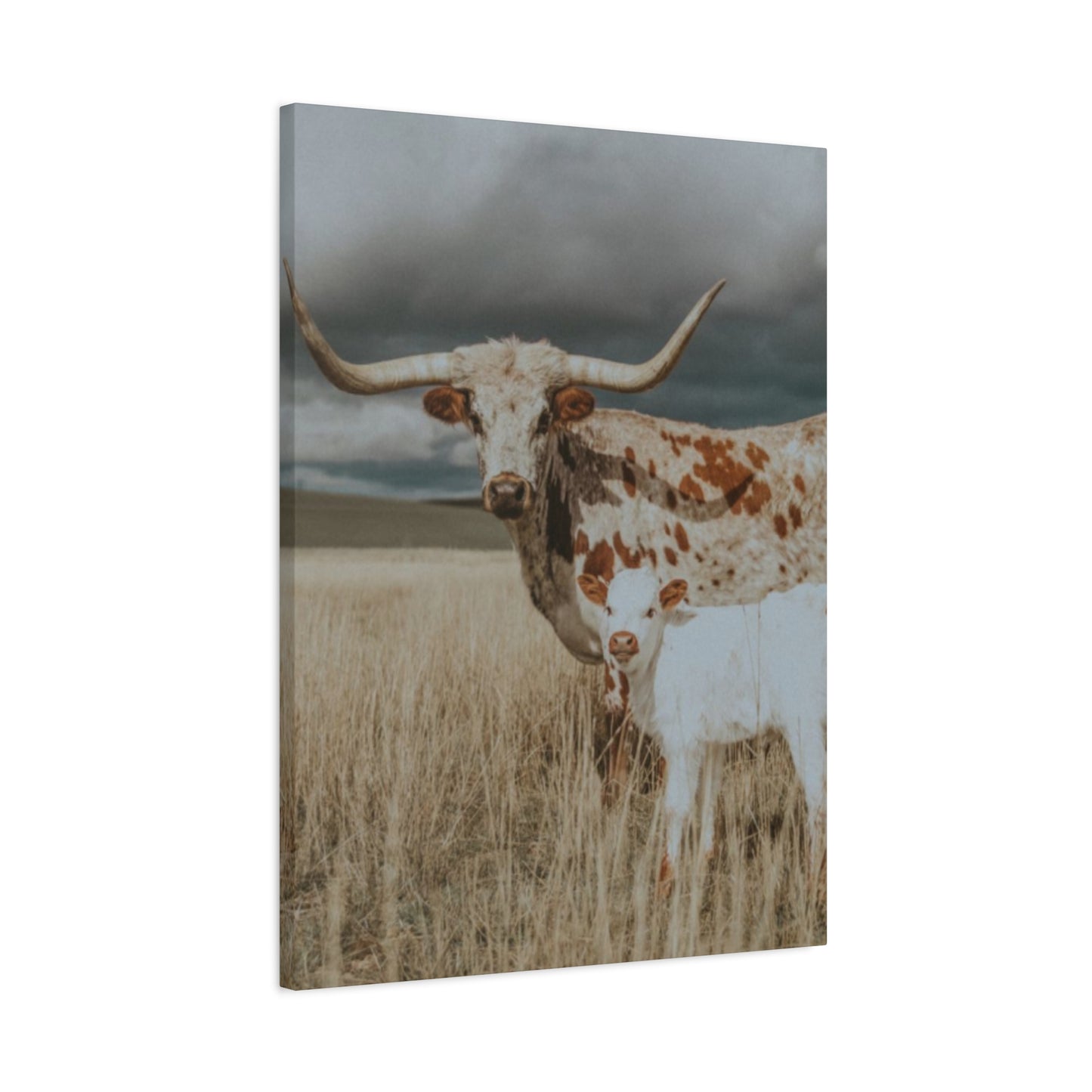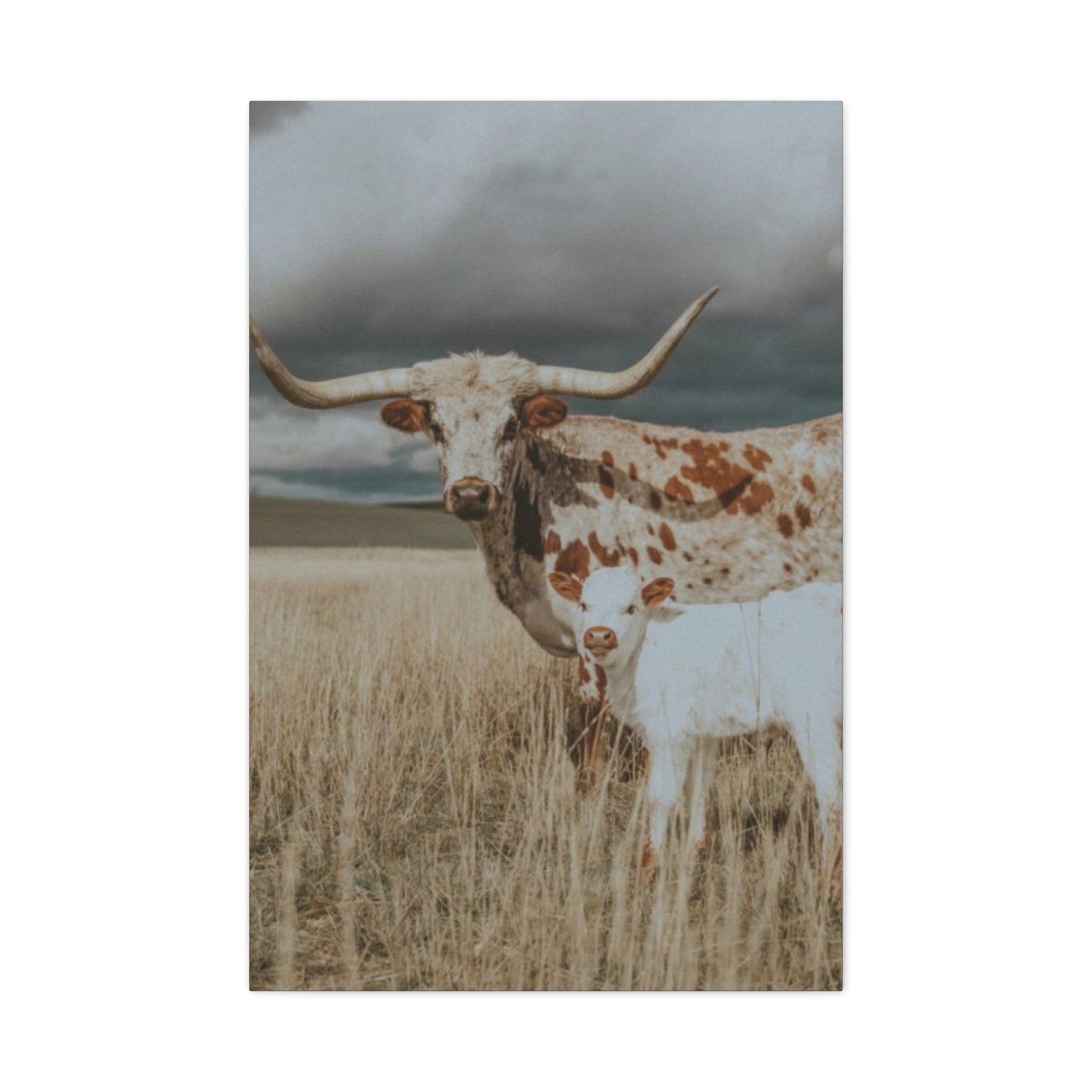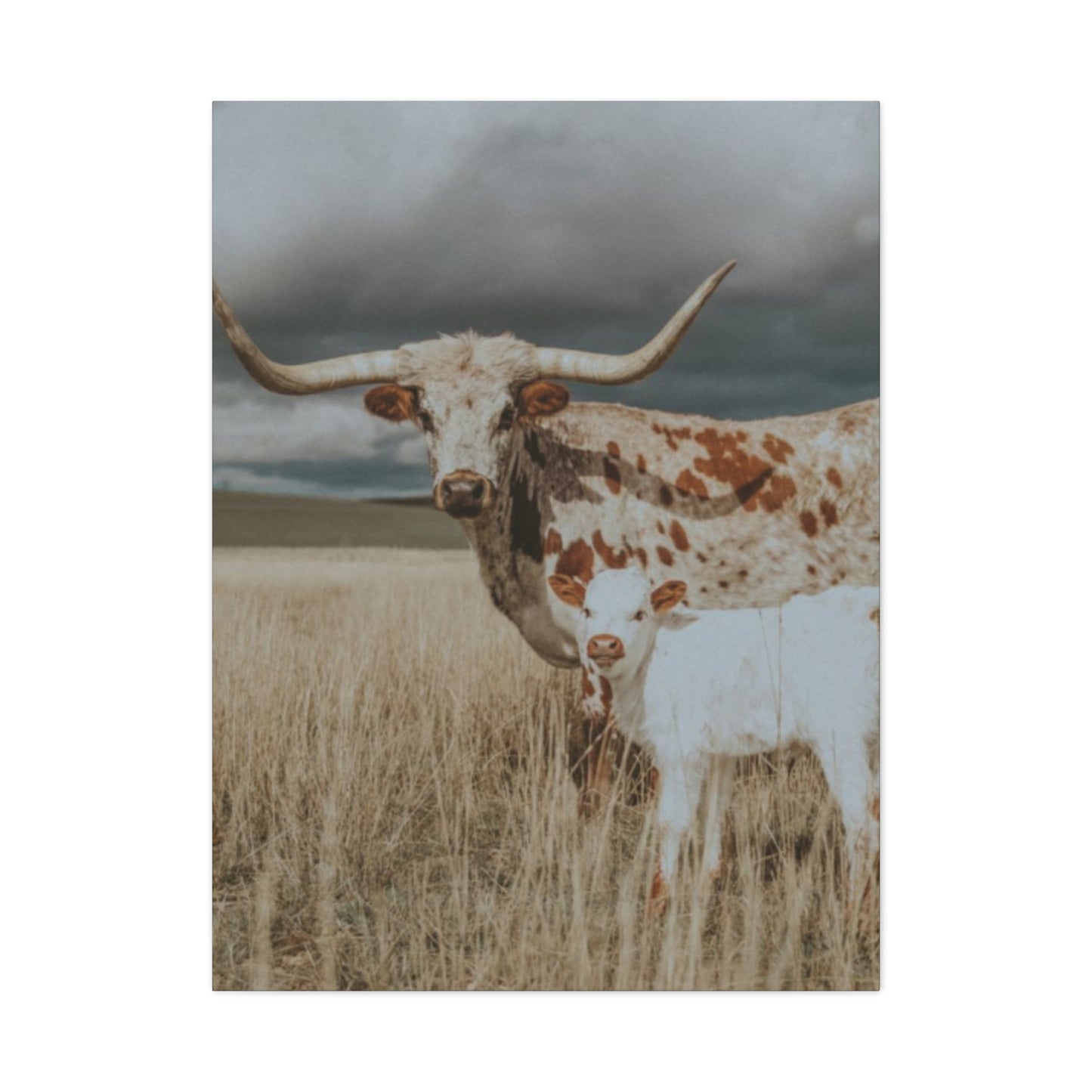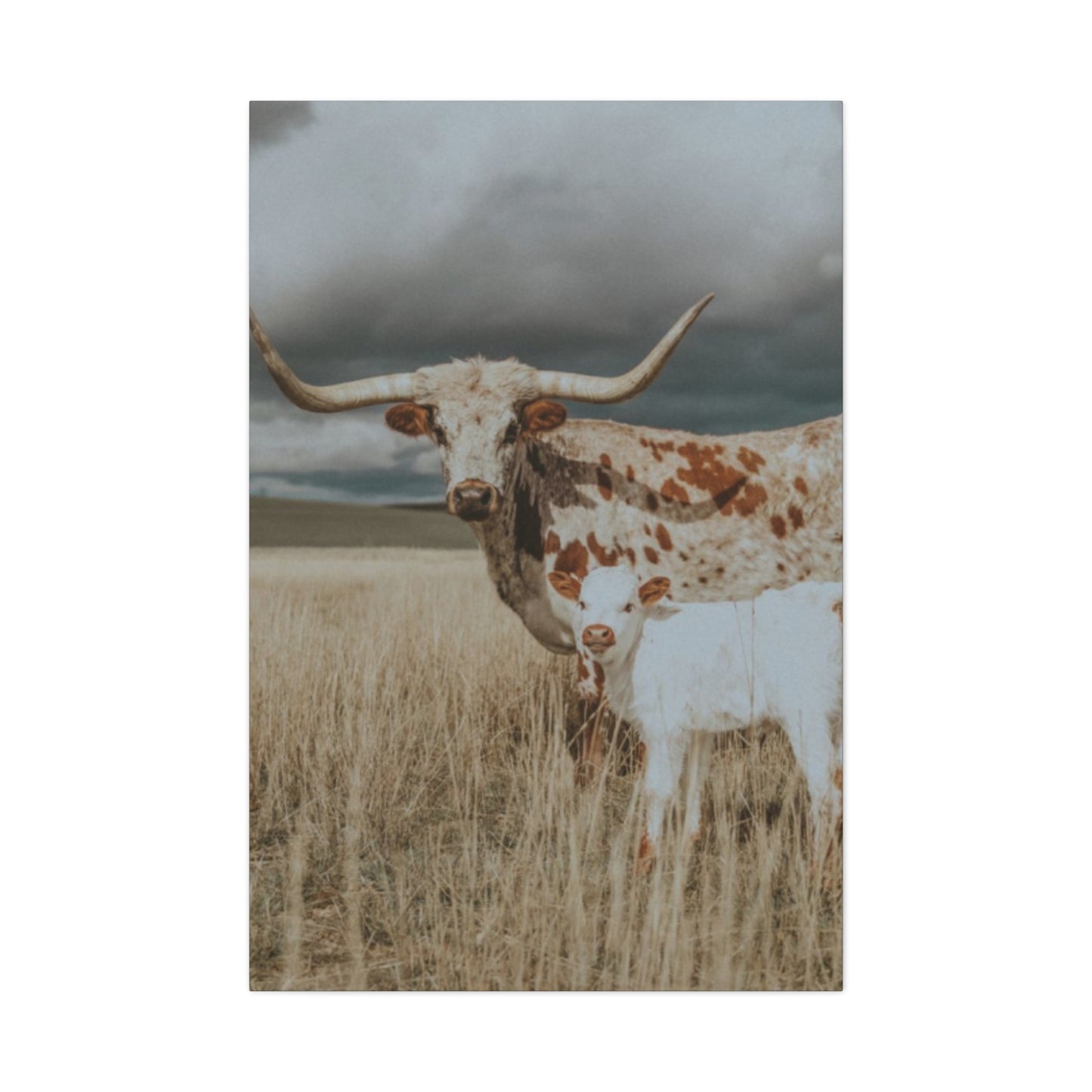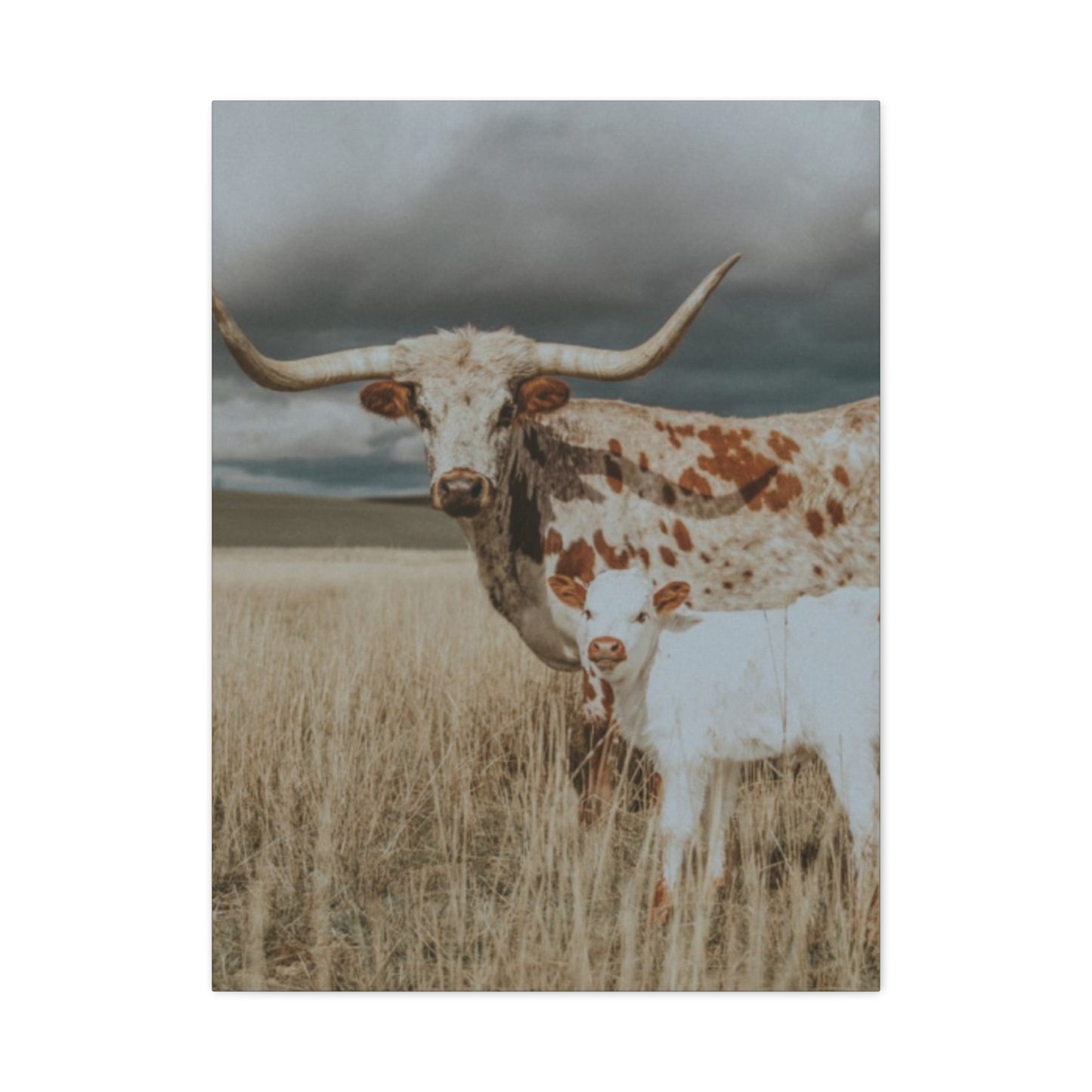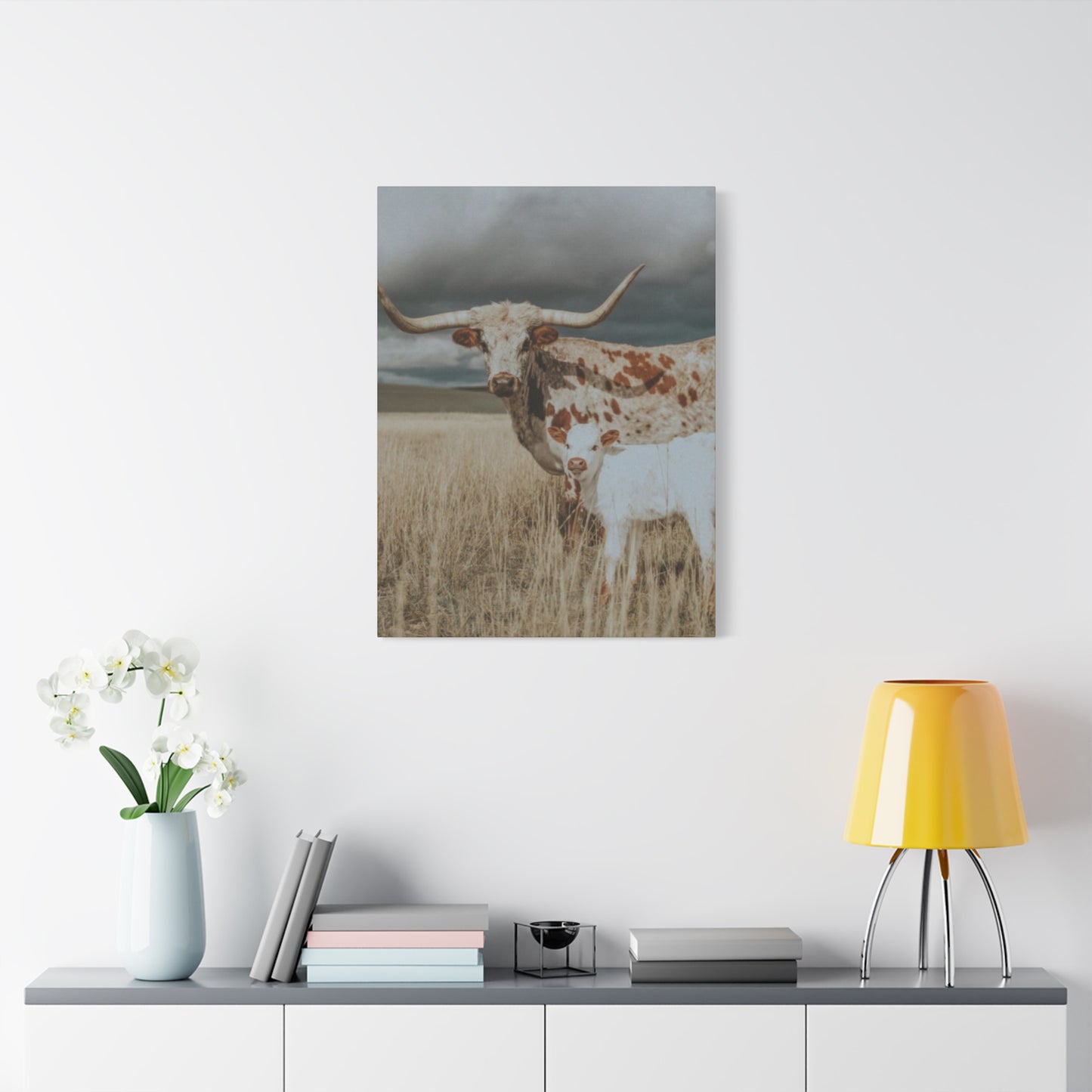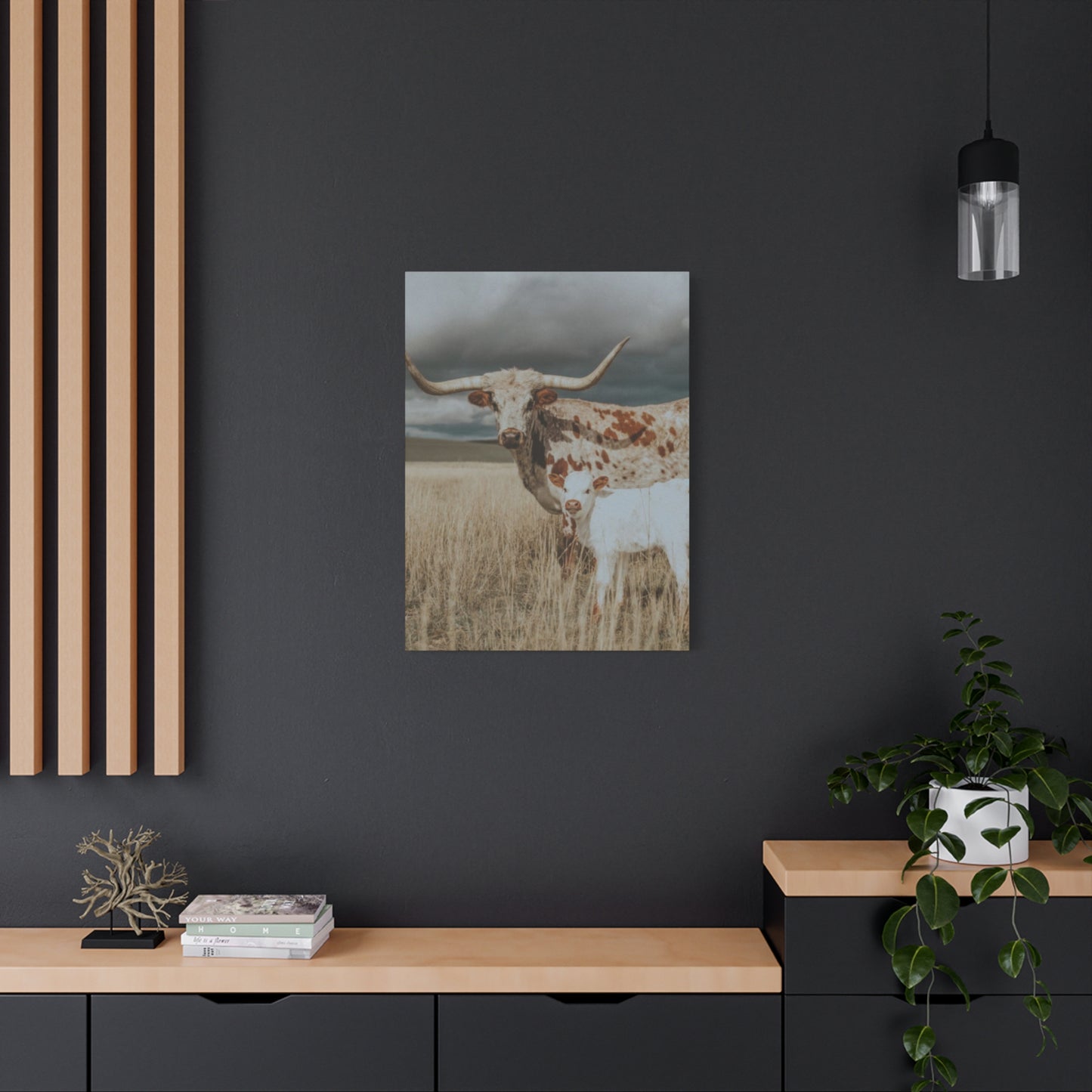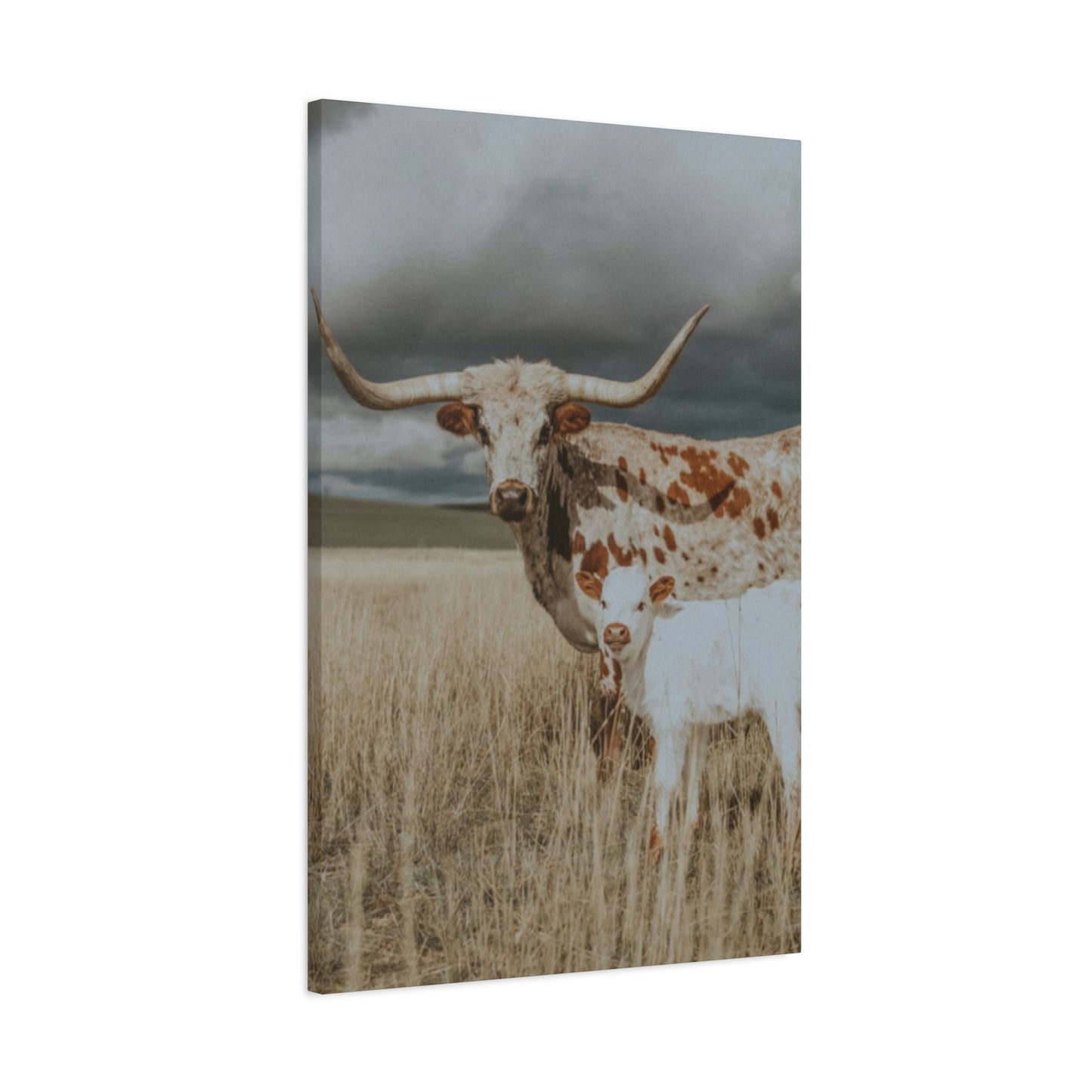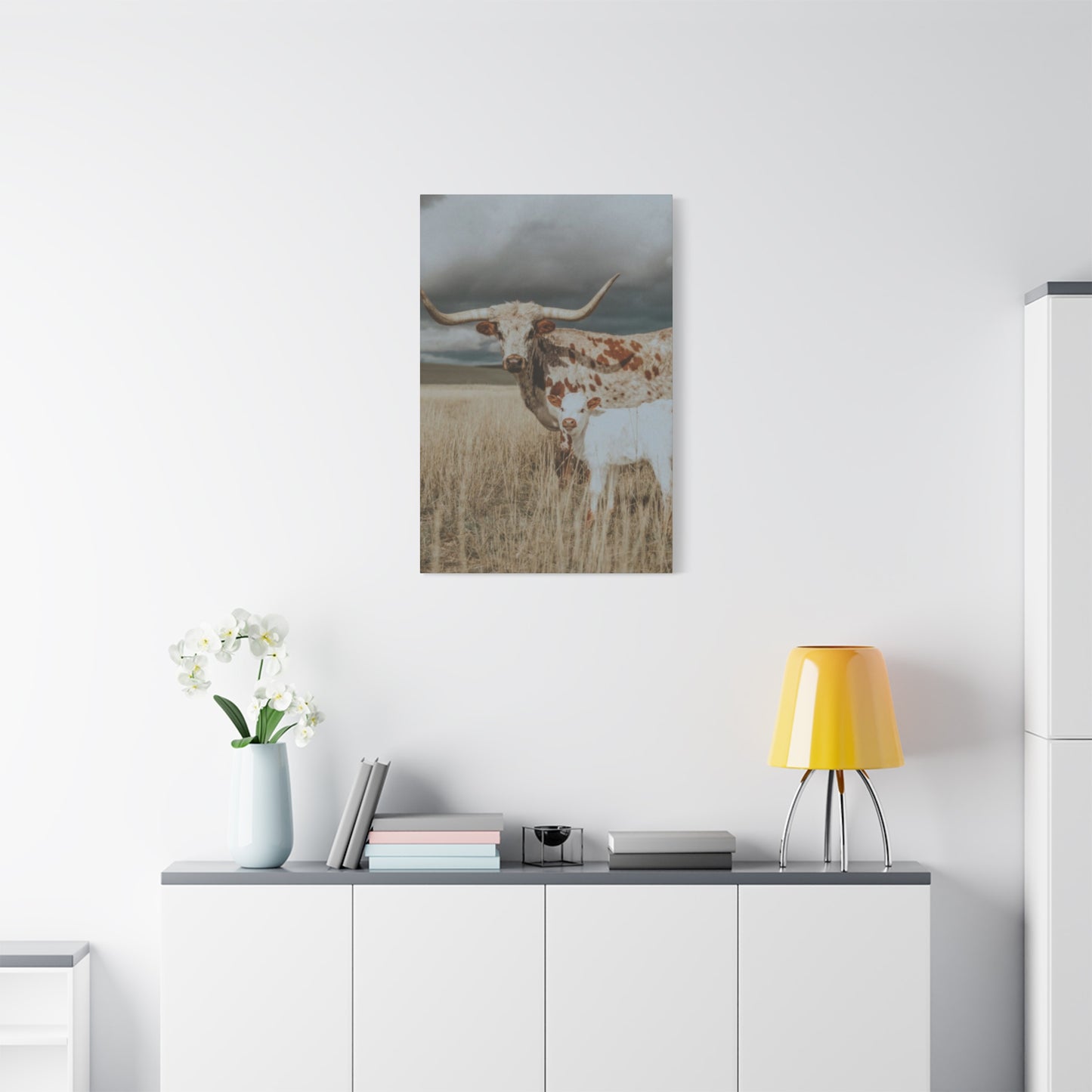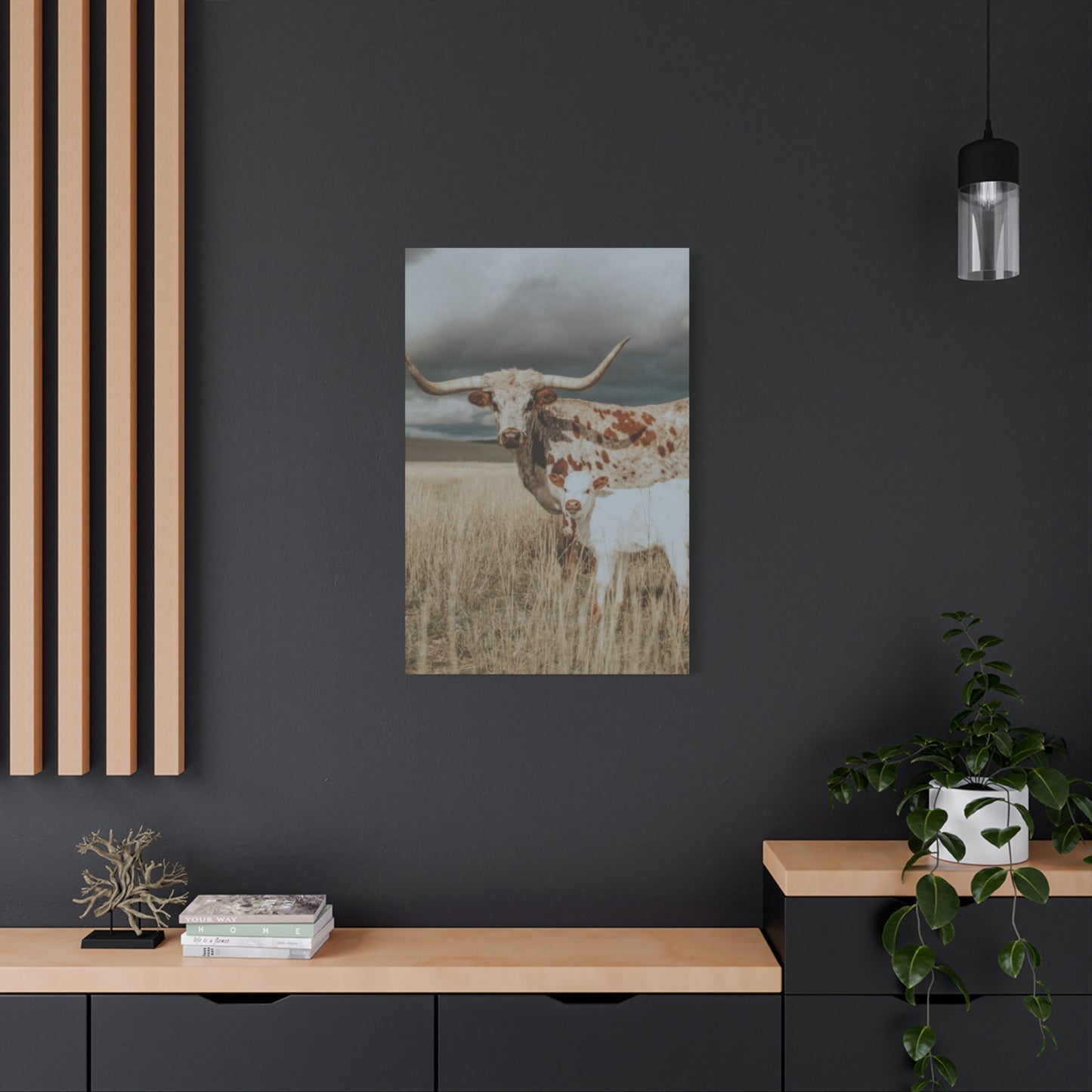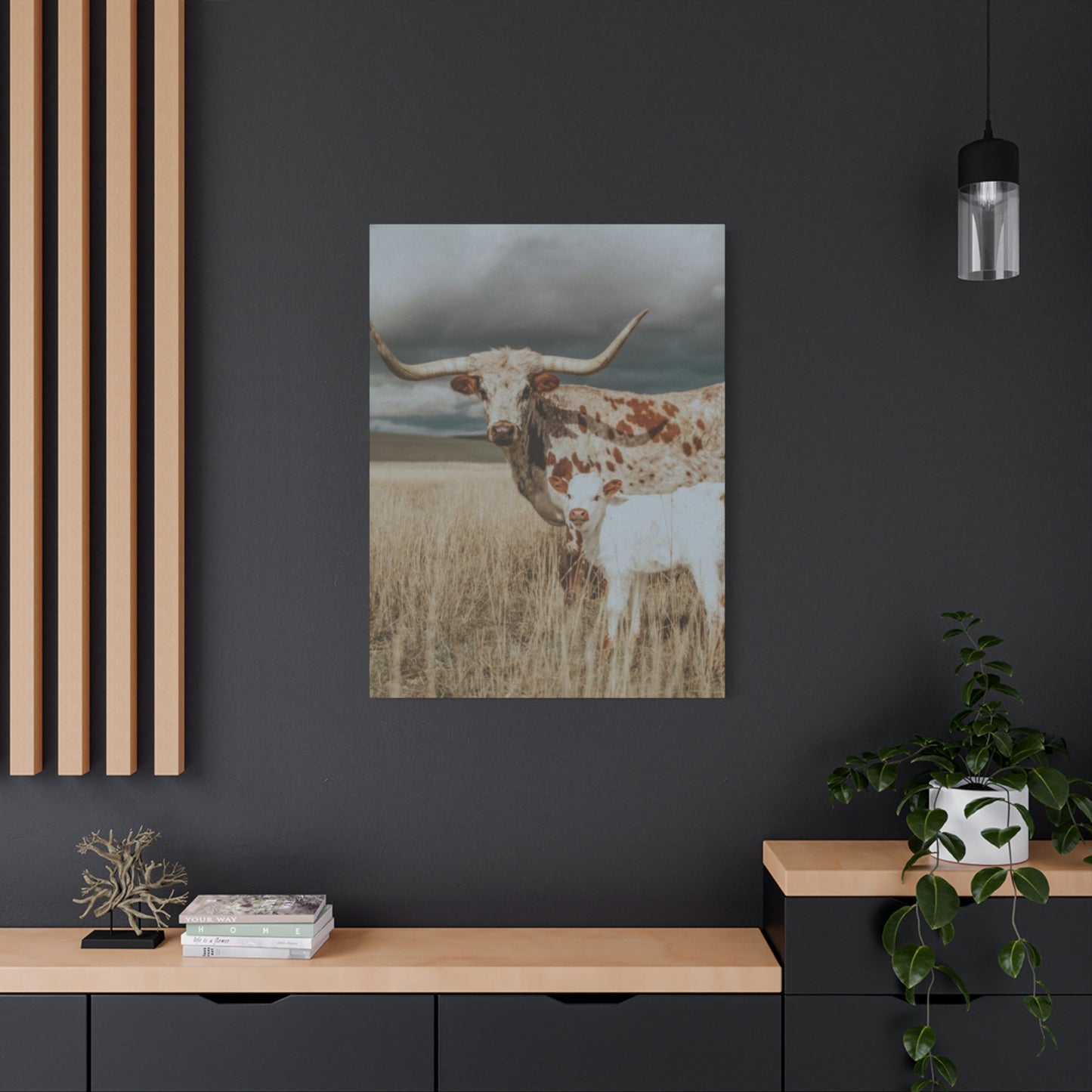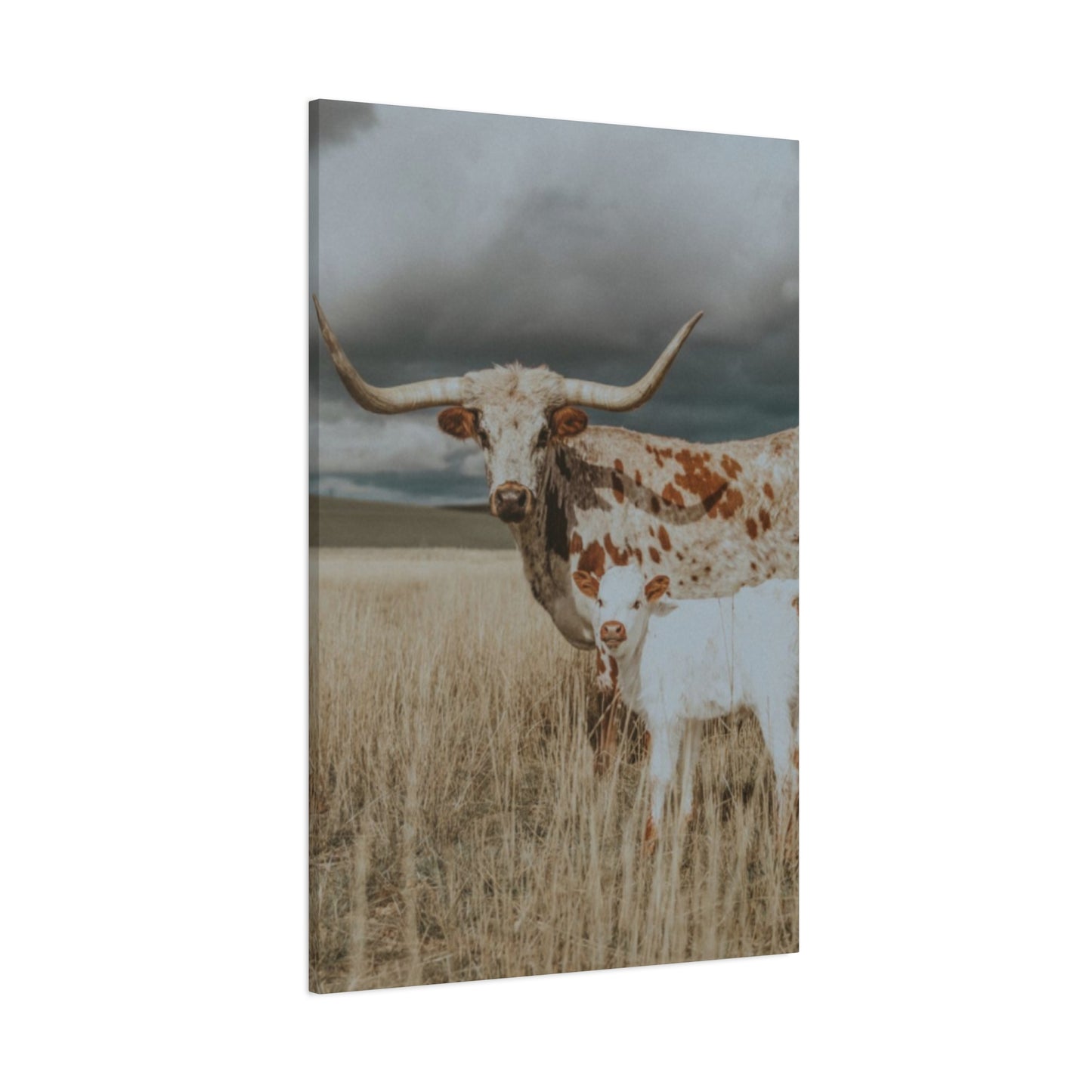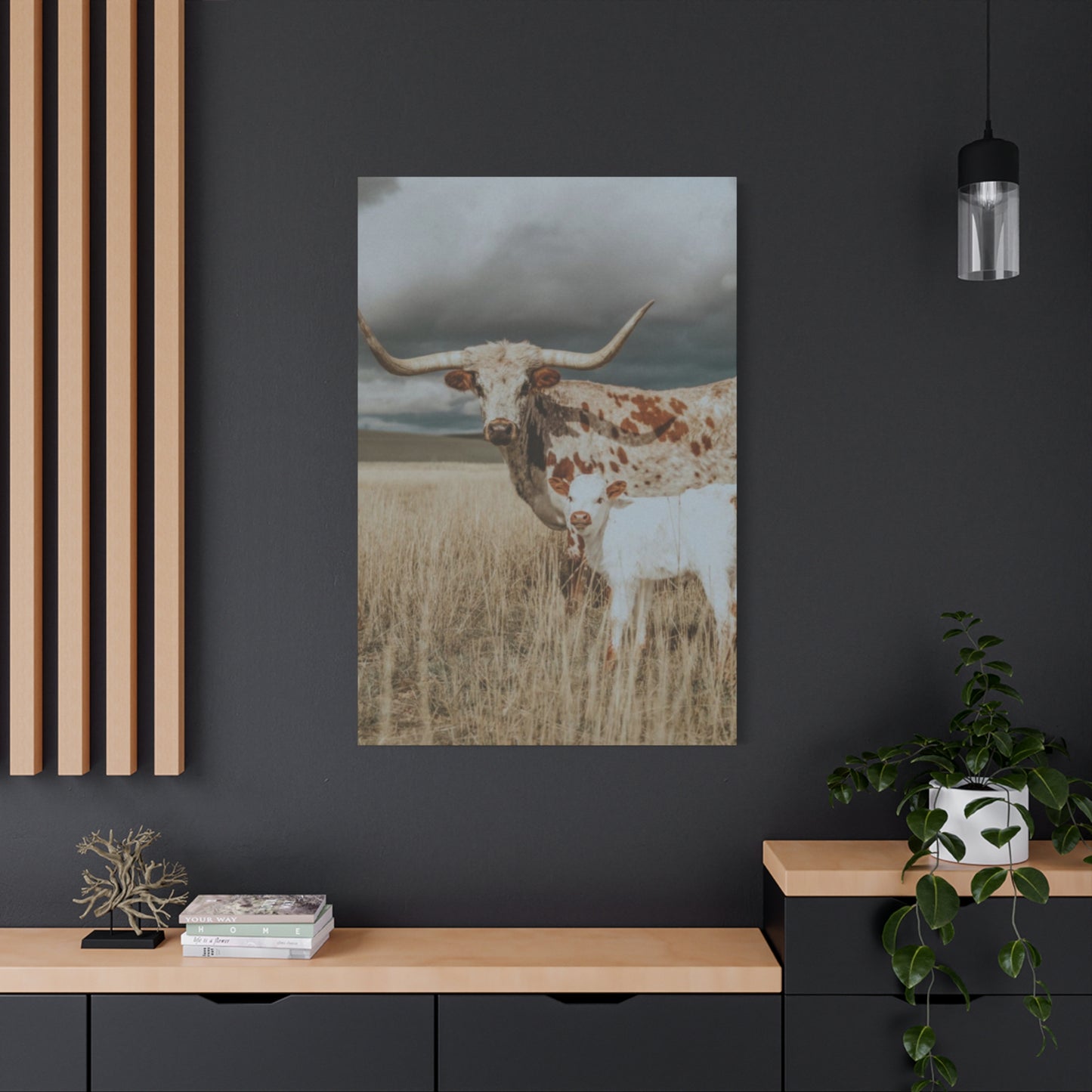Bringing the Spirit of the American West to Your Home: The Allure of Wild Buffalo and Longhorn Photos in Wall Art
The presence of wild buffalo imagery in home decoration has experienced remarkable growth over recent years, capturing the hearts of interior design enthusiasts who appreciate the raw beauty of nature. These magnificent creatures, particularly when depicted in family groups across sprawling prairies, offer a powerful visual statement that transforms ordinary walls into captivating focal points. The appeal lies not merely in their aesthetic value but in their ability to evoke feelings of freedom, strength, and connection to the natural world that many modern homeowners desperately seek in their increasingly urbanized lives.
When considering artwork featuring these impressive animals, particularly longhorn buffalo herds in their natural habitat, you're not simply purchasing decoration for your walls. You're investing in a piece that carries significant symbolic weight, representing resilience, family bonds, and the untamed spirit of wilderness landscapes. The brown tones and earthy palette naturally present in buffalo herd imagery create warmth and grounding energy within interior spaces, making them particularly suitable for creating cozy, inviting atmospheres in living rooms, dens, and even professional office environments.
The versatility of buffalo herd photography transformed into canvas prints allows these pieces to complement various decorating styles, from rustic farmhouse aesthetics to contemporary minimalist designs. Whether you're drawn to the detailed textures of their thick coats, the dramatic composition of a family group moving across grasslands, or the nostalgic connection to western heritage, these artworks offer something meaningful beyond simple visual appeal. They tell stories of survival, community, and the enduring beauty of wildlife that has roamed North American plains for thousands of years.
Selecting Canvas Prints Featuring Prairie Herds
Choosing the right canvas featuring buffalo families requires careful consideration of multiple factors that will ultimately determine how well the piece integrates into your existing decor. The first aspect to examine is the photographic quality and composition of the image itself. Look for prints that capture sharp details, particularly in the animals' faces and fur textures, as these elements bring depth and realism to the artwork. High-resolution photography ensures that even large format prints maintain clarity and visual impact from various viewing distances.
The composition should feel balanced and natural, avoiding overly staged or artificial arrangements. Authentic wildlife photography often captures moments of genuine interaction between family members, whether that's a mother with her calf, a protective bull standing guard, or an entire herd moving cohesively across the landscape. These candid moments create emotional resonance that static, posed imagery cannot replicate. Pay attention to the background elements as well, as prairie grasses, dramatic skies, and distant horizons contribute significantly to the overall atmosphere of the piece.
Color palette plays a crucial role in how the artwork will function within your space. While buffalo naturally present in shades of brown, from deep chocolate to lighter tan variations, the surrounding environment introduces additional colors. Sunset scenes might incorporate warm oranges and reds, while overcast days create cooler, more muted tones. Consider which color scheme best complements your existing wall colors, furniture, and decorative accents. The goal is creating harmony rather than jarring contrast, unless you specifically want the artwork to serve as a bold statement piece.
The emotional tone captured in the photography matters tremendously for the overall feel of your room. Some images convey powerful drama through storm clouds and dynamic movement, while others offer peaceful tranquility through calm grazing scenes bathed in soft morning light. Think about the mood you want to establish in the space where the canvas will hang. A home office might benefit from the quiet strength of a solitary bull, while a family room could embrace the warmth of mothers with their young calves.
Frame style and canvas wrapping method significantly impact the finished appearance. Gallery wrap canvases, where the image extends around the edges, create a modern, frameless look that works beautifully in contemporary settings. Alternatively, adding a complementary frame can enhance traditional or rustic decor schemes. Consider the thickness of the canvas stretcher bars as well, with thicker profiles creating more dimensional presence on the wall. These seemingly small details make substantial differences in the final presentation.
Incorporating Wildlife Photography Into Living Spaces
Living rooms present unique opportunities for showcasing large format buffalo family canvas prints, as these spaces typically feature the most available wall space and serve as primary gathering areas for family and guests. The strategic placement of wildlife photography can anchor the entire room's design, establishing a thematic foundation that other decorative elements can support and complement. Above sofas, fireplaces, or console tables, these pieces command attention while creating conversation starters that reflect the homeowner's appreciation for natural beauty.
When working with wildlife-themed artwork in living areas, scale becomes particularly important. A canvas that's too small for the wall space appears insignificant and fails to make the intended impact, while one that's too large can overwhelm the room and create visual imbalance. A general guideline suggests the artwork should occupy roughly two-thirds to three-quarters of the furniture width below it, though this can vary based on ceiling height and overall room proportions. Don't be afraid to go bold with sizing, especially if you want the buffalo imagery to serve as the room's primary focal point.
Color coordination between the canvas and existing room elements creates cohesive design flow. If your living room features neutral tones like beige, cream, or gray, the warm browns of buffalo herds integrate seamlessly, adding organic warmth without introducing jarring color shifts. For rooms with existing color schemes, look for canvas prints that incorporate complementary shades in the sky, landscape, or time-of-day lighting. This doesn't mean everything must match perfectly, but rather that colors should feel harmonious when viewed together.
Lighting dramatically affects how buffalo herd photography appears on your walls. Natural light can bring out subtle details and color variations throughout the day, creating an ever-changing display. However, direct sunlight may cause fading over time, so consider placement relative to windows. Artificial lighting offers more control, with track lights, picture lights, or strategically placed lamps highlighting the artwork during evening hours. Warm-toned bulbs often enhance the earthy qualities of buffalo imagery, while cooler lights can emphasize dramatic contrasts.
Creating gallery walls that incorporate buffalo family prints alongside other complementary pieces allows for creative expression while maintaining thematic consistency. Mixing different sizes of wildlife photography, combining color and black-and-white images, or integrating related elements like antique horseshoes, weathered wood, or native textiles can build rich, layered displays. The key is maintaining visual balance and ensuring each piece has adequate breathing room rather than creating cluttered arrangements that dilute individual impact.
Rustic Decor Elements and Prairie Animal Imagery
Rustic design aesthetics find natural partnership with longhorn buffalo canvas artwork, as both celebrate the raw, authentic beauty of natural materials and western heritage. This decorating style emphasizes textures, organic materials, and earthy color palettes that mirror the environments where these magnificent animals roam. Reclaimed wood furniture, leather upholstery, stone accents, and metal fixtures create the perfect backdrop for wildlife photography that honors these same elemental qualities.
The textural contrast between smooth canvas prints and rougher rustic elements adds dimensional interest to room designs. A buffalo herd canvas hanging above distressed wood furniture creates appealing visual tension between refined photographic art and deliberately weathered surfaces. This juxtaposition highlights both elements, allowing the sophistication of the photography to elevate the rustic components while the authentic materials ground the artwork in tangible, earthy reality.
Color harmony in rustic spaces typically revolves around nature-inspired palettes: warm browns, deep greens, stone grays, and sunset tones that appear in prairie landscapes. Buffalo family imagery naturally incorporates these colors, making integration nearly effortless. The rich browns of the animals' coats echo wooden furniture and leather accents, while prairie grasses connect to any green elements, and dramatic skies tie into neutral backgrounds. This inherent compatibility makes wildlife canvas prints particularly versatile in rustic interior schemes.
Layering textures throughout the space enhances the rustic atmosphere while providing context for wildlife artwork. Consider incorporating woven textiles like wool throws or jute rugs that reference the natural fibers present in buffalo coats. Exposed beams, brick walls, or stone fireplaces provide architectural texture that complements the organic subject matter of the canvas prints. Even smaller details like wrought iron curtain rods, pottery vessels, or natural fiber baskets contribute to the cohesive rustic narrative.
Balancing rustic elements prevents spaces from feeling overly themed or costume-like. While buffalo herd photography pairs beautifully with western-inspired decor, modern touches keep the design feeling fresh and intentional rather than cliched. Clean-lined furniture silhouettes, contemporary light fixtures, or abstract accent pieces can provide counterpoints that prevent the space from becoming too literally western. The goal is creating environments that feel collected and authentic rather than decorated from a single catalog.
Large Format Canvas Advantages for Wildlife Art
Large format canvas prints offer distinct advantages when displaying buffalo family photography, primarily through their ability to showcase intricate details and create immersive visual experiences. When wildlife photography is enlarged to substantial dimensions, viewers can appreciate subtle textures like individual hairs in the animals' coats, the moisture on their noses, or the varied earth tones within prairie grasses. These details, invisible in smaller prints, add realism and depth that draw viewers into the scene.
The immersive quality of oversized wildlife imagery transports viewers mentally into the depicted landscape. A wall-sized canvas showing a longhorn buffalo herd moving across open plains can make a room feel larger and more open, almost as though the wall has transformed into a window overlooking actual wilderness. This psychological expansion of space proves particularly valuable in smaller rooms or urban apartments where physical connections to nature may be limited.
Statement-making impact represents another significant benefit of larger canvas formats. In an era where visual stimulation competes constantly for attention, a commanding buffalo family print commands presence that smaller artworks cannot match. Guests immediately notice these pieces upon entering a room, creating memorable impressions and conveying the homeowner's personality and values. The bold choice to dedicate significant wall space to wildlife photography demonstrates confidence and commitment to specific aesthetic principles.
Proportional relationships between artwork and furniture become more forgiving with larger canvases. A substantial print above a sectional sofa or king-size bed maintains visual weight appropriate to the furniture scale, whereas smaller pieces might appear insignificant or disconnected. This proper scaling creates professional, gallery-quality presentations in residential settings, elevating the overall sophistication of the interior design.
However, large format canvases require appropriate spaces to truly shine. Ceiling height, viewing distance, and wall dimensions all factor into whether oversized pieces will work effectively. Rooms with high ceilings particularly benefit from tall or wide canvas arrangements that fill vertical space without overwhelming. Conversely, smaller rooms might better accommodate medium-sized prints or multi-panel arrangements that provide visual interest without dominating every sightline.
Western Heritage Reflected in Animal Photography
The cultural significance of buffalo in western heritage adds layers of meaning to canvas artwork featuring these animals. For generations, these creatures have symbolized the American frontier, representing both the abundant natural resources that attracted settlers and the indigenous peoples for whom buffalo held spiritual and practical importance. Displaying buffalo family photography acknowledges this complex history while celebrating the species' remarkable recovery from near extinction.
This historical connection makes buffalo imagery particularly meaningful in regions with strong western traditions, though the appeal extends far beyond geographical boundaries. Urban dwellers often feel drawn to these symbols of wilderness and freedom, seeking visual reminders of landscapes and lifestyles different from their daily experiences. The artwork serves as a bridge between contemporary living and ancestral connections to land and wildlife that persist in collective cultural memory.
The longhorn variety specifically carries additional western symbolism, associated with cattle drives, ranching heritage, and the economic development of the American West. Though often confused with domestic longhorn cattle, the distinctive horns on certain buffalo populations create similar visual associations with frontier life. Photography capturing these distinctive features appeals to those who appreciate western history, rodeo culture, or ranching traditions, even if they've never personally lived that lifestyle.
Authenticity matters when representing these culturally significant animals. Photography that captures genuine wild behavior in natural habitats carries more artistic and ethical weight than staged or captive animal imagery. Many art buyers increasingly value knowing that the wildlife depicted was photographed respectfully in the wild, with photographers following ethical guidelines that prioritize animal welfare over getting the perfect shot. This authenticity adds integrity to the artwork beyond purely aesthetic considerations.
Modern interpretations of western themes through buffalo photography allow for fresh perspectives on traditional subject matter. Contemporary photographers bring new compositional approaches, digital editing techniques, and diverse viewpoints to wildlife documentation. This evolution ensures that buffalo family canvas art remains relevant and appealing to younger generations while still honoring the cultural heritage these animals represent.
Nature-Inspired Design Through Wildlife Canvas Art
Nature-inspired interior design philosophy, often called biophilic design, recognizes humans' innate connection to natural environments and incorporates elements that satisfy this deep-rooted need. Buffalo herd canvas artwork serves this purpose beautifully by bringing wilderness imagery directly into living spaces. Research consistently shows that visual connections to nature reduce stress, improve mood, and enhance overall wellbeing, making these aesthetic choices beneficial beyond simple decoration.
The specific qualities of prairie landscapes depicted in buffalo photography contribute unique atmospheric elements to interior spaces. Open horizons create feelings of freedom and possibility, counteracting the confinement of indoor environments. Golden grasses swaying in wind suggest movement and life, preventing static, lifeless room feels. Dramatic skies with gathering storms or radiant sunsets introduce natural drama and ever-changing beauty that keeps artwork engaging over time rather than becoming visual wallpaper.
Seasonal variations in buffalo imagery allow for rotating displays that mirror natural cycles. Photography captured during different times of year shows varied environments: snow-dusted winter scenes, spring calving season, summer grasslands at peak green, or autumn prairies in golden transition. Collectors who invest in multiple canvases can swap pieces seasonally, keeping their spaces fresh while maintaining thematic consistency throughout the year.
Complementary natural elements strengthen the biophilic impact of wildlife canvas art. Live plants, particularly grasses or native species, create literal connections between the depicted landscapes and actual living nature. Natural materials like wood, stone, wool, and leather echo the organic textures visible in the photography. Even subtle additions like pine cone displays, river rocks, or dried botanical arrangements can reinforce the nature-inspired theme without overwhelming the space.
The psychological benefits of wildlife imagery extend beyond general nature connections to specific animal symbolism. Buffalo represent strength, resilience, and community, qualities that viewers may subconsciously absorb through regular exposure to the imagery. Family groups specifically emphasize nurturing, protection, and intergenerational bonds, making them particularly appropriate for family-focused spaces. These symbolic associations operate subtly but meaningfully in shaping the emotional atmosphere of a home.
Photography Quality Considerations for Canvas Prints
Image resolution stands as the single most important technical factor determining canvas print quality. Wildlife photography intended for large format printing requires significantly higher resolution than images suitable for screens or small prints. Insufficient resolution results in pixelation, blurriness, and loss of detail that becomes glaringly obvious when images are enlarged. Professional wildlife photographers typically capture images at high megapixel counts specifically to accommodate various print sizes without quality degradation.
The printing process itself dramatically affects final canvas quality. Giclée printing, which uses archival inks and specialized printers, produces superior color accuracy, tonal range, and longevity compared to standard printing methods. These archival-quality inks resist fading from light exposure and environmental factors, ensuring that your buffalo herd canvas maintains its visual impact for decades rather than years. While premium printing costs more initially, the investment pays dividends through lasting beauty.
Color calibration between the original photograph and final print prevents disappointing results. Professional canvas producers use color-managed workflows that ensure what you see on screen closely matches what arrives on your wall. However, some variation is inevitable due to differences between transmitted light from screens and reflected light from prints. Understanding these limitations helps set appropriate expectations and appreciate the unique qualities that physical prints offer.
Canvas material quality affects both appearance and durability. Premium cotton or polyester-cotton blend canvases provide superior texture, print receptivity, and structural integrity compared to cheaper alternatives. The weave tightness impacts how much detail the canvas can hold, with tighter weaves supporting finer detail reproduction. Additionally, properly primed canvases prevent ink absorption issues that can dull colors or create uneven appearances.
Stretcher bar quality and construction methods influence how the canvas hangs and ages over time. Solid wood stretchers resist warping better than composite materials, maintaining proper tension that keeps the canvas taut and smooth. Corner joints should be reinforced, and cross-bracing becomes essential for larger formats to prevent sagging. These structural elements remain hidden behind the canvas but fundamentally determine whether the piece maintains its appearance or develops unsightly wrinkles and distortions.
Creating Focal Points With Herd Photography
Architectural considerations play crucial roles in positioning buffalo family canvas art for maximum impact. High-traffic walls that naturally draw the eye upon entering a room make ideal locations for statement pieces. These might include the wall opposite the main entrance, above a fireplace mantel, or behind primary seating arrangements. Placing wildlife photography in these strategic positions ensures it receives the attention it deserves while establishing the room's aesthetic tone immediately.
The rule of thirds, borrowed from photography composition, applies equally to artwork placement on walls. Rather than centering pieces precisely within available wall space, positioning them slightly off-center often creates more dynamic, visually interesting arrangements. This technique proves particularly effective with asymmetrical furniture layouts or when incorporating the canvas into gallery wall arrangements with multiple pieces.
Eye-level hanging remains the standard guideline, with the center of the artwork ideally positioned at average human eye level, approximately 57-60 inches from the floor. However, this rule flexes based on viewing conditions. Artwork meant to be viewed primarily while seated, such as pieces in dining areas or above low-profile furniture, should hang lower. Conversely, pieces in spaces with high ceilings might hang higher to maintain proper proportional relationships with the architecture.
Negative space surrounding wildlife canvas art contributes significantly to its impact. Overcrowded walls with too many competing elements dilute the power of individual pieces. Allowing generous empty space around buffalo herd photography lets the imagery breathe and maintains focus on the intended focal point. This restraint proves especially important with dramatic or large-scale pieces that deserve undivided attention.
Lighting design specifically highlighting wildlife artwork transforms good placement into exceptional presentation. Picture lights mounted directly to the frame provide focused illumination, while wall-washing techniques using track or recessed lights create more subtle enhancement. Adjustable fixtures allow customization based on time of day or mood, with the ability to create dramatic spotlighting for evening ambiance or gentle highlighting during daytime hours when natural light supplements artificial sources.
Color Palettes in Buffalo Family Canvas Art
Earthy brown tones dominate most buffalo photography, ranging from rich chocolate and mahogany to lighter tan and beige variations. These warm, grounding colors create cozy, inviting atmospheres particularly suited to spaces meant for relaxation and gathering. The natural variation within even a single animal's coat provides tonal interest that prevents monotony, while the slight differences between family members add subtle complexity to the overall composition.
Background landscapes introduce additional colors that dramatically affect the artwork's overall palette and emotional tone. Golden prairie grasses suggest late summer or autumn, creating warm, nostalgic feelings. Green grasslands indicate spring or well-watered environments, bringing fresher, more vibrant energy. Snow-covered winter scenes introduce cool whites and grays that can create either stark drama or peaceful serenity depending on lighting and composition.
Sky conditions contribute enormous color variation to buffalo herd photography. Clear blue skies provide classic, optimistic backgrounds that work well in cheerful, light-filled spaces. Dramatic storm clouds introduce moody grays, deep blues, and sometimes ominous purple tones that create tension and visual interest. Sunrise and sunset scenes offer spectacular orange, pink, and red hues that can become the most striking elements in the composition, especially when dramatic lighting illuminates clouds or silhouettes the buffalo against colorful horizons.
Seasonal lighting affects how colors appear in buffalo photography. Winter's weak sunlight creates cooler, more muted tones with bluish cast, while summer's intense light often produces warmer, more saturated colors. Spring and autumn provide transitional lighting that many photographers consider ideal, offering warm but not harsh illumination that brings out the full spectrum of earth tones without washing out details or creating excessive contrast.
Monochromatic or black-and-white treatments of buffalo imagery offer alternative aesthetic options that some designers prefer. These versions emphasize form, texture, and composition while eliminating color considerations entirely. Black-and-white buffalo photography carries timeless, classic qualities that integrate easily into diverse decor schemes and never clash with existing color palettes. The dramatic tonal contrasts possible in monochrome work can create striking visual impact that rivals or even exceeds color photography.
Wall Decor Themes for Different Room Styles
Contemporary minimalist interiors benefit from buffalo canvas art that embraces clean composition and restrained elements. Simple scenes featuring a single animal or small family group against uncluttered backgrounds align with minimalist principles. The organic subject matter provides necessary warmth and life to spaces that might otherwise feel cold or sterile, while the simplicity of the composition respects the minimalist aesthetic's preference for visual clarity over complexity.
Traditional or classic decor schemes accommodate buffalo family photography when paired with appropriate framing and presentation methods. Ornate frames in gold, bronze, or dark wood finishes elevate wildlife imagery to fine art status suitable for formal spaces. The timeless subject matter of these majestic animals fits comfortably within traditional design frameworks that favor established, enduring aesthetics over trendy, temporary styles.
Industrial loft spaces find natural affinity with rustic wildlife canvas prints, as both celebrate raw authenticity and unpretentious materials. The exposed brick, concrete, and metal elements common in industrial design create perfect backdrops for earthy buffalo photography. The contrast between urban industrial architecture and wild prairie imagery creates compelling tension that highlights the unique character of both elements.
Farmhouse and country cottage styles practically demand buffalo or longhorn imagery as natural extensions of their rural, agricultural themes. These decor approaches celebrate pastoral life and connections to the land, making wildlife photography depicting animals historically important to agricultural development entirely appropriate. Distressed wood frames, vintage presentation styles, or even deliberate aging effects on the canvas itself can enhance the rustic, timeworn aesthetic these styles embrace.
Transitional spaces that blend traditional and contemporary elements find buffalo family canvas art particularly versatile. The subject matter carries traditional associations with western heritage and natural history, while modern photographic techniques and clean presentation methods satisfy contemporary sensibilities. This dual nature allows wildlife canvas prints to bridge stylistic differences, creating cohesion in spaces that might otherwise feel disjointed.
Emotional Connections to Prairie Wildlife Imagery
The psychological impact of buffalo family imagery extends beyond aesthetic appreciation to emotional resonance with themes of protection, nurturing, and intergenerational bonds. Photographs capturing maternal care, with calves staying close to their mothers, trigger empathetic responses in viewers. These scenes mirror human family dynamics, creating subconscious connections that make the artwork feel personally meaningful rather than merely decorative.
Strength and resilience symbolism inherent in buffalo imagery appeals to those facing challenges or seeking inspiration. These animals survived near extinction, endured harsh climates, and maintained social structures despite enormous pressures. Viewing buffalo family photography can serve as subtle daily reminders of perseverance, adaptability, and the importance of community support during difficult times. This symbolic encouragement operates quietly but persistently in the background of daily life.
Freedom and wildness associations with prairie landscapes and roaming herds speak to fundamental human desires for autonomy and connection to untamed nature. In increasingly regulated, urbanized, and digitally dominated lives, wildlife imagery offers vicarious escape into environments governed by natural rhythms rather than human schedules. This psychological refuge becomes more valuable as modern life grows more complex and constrained.
Nostalgia for simpler times, whether personally experienced or imagined through cultural narratives, draws many people to western wildlife imagery. Buffalo herds represent a vanishing or vanished way of life when human populations were smaller, wild spaces more abundant, and the pace of existence slower. This nostalgic appeal doesn't require actual historical experience; collective cultural memory and storytelling create longing for eras we may never have known personally.
Environmental consciousness and conservation values find expression through wildlife photography appreciation. Displaying buffalo family canvas art can signal commitment to wildlife protection and habitat preservation. For those unable to contribute financially or through direct action to conservation causes, purchasing and prominently displaying wildlife photography represents a tangible way to honor and celebrate species that need human advocacy and protection.
Maintenance and Longevity of Canvas Wall Art
Proper cleaning techniques preserve canvas prints without damaging the printed surface or canvas material. Dusting regularly with soft, dry microfiber cloths removes accumulated particles before they embed in the canvas texture. Avoid applying pressure that might scratch the surface or distort the canvas. For more stubborn marks, slightly dampened cloths can be used sparingly, always blotting rather than rubbing, and ensuring the canvas dries completely to prevent water spots or mold growth.
Environmental conditions significantly impact canvas longevity. Excessive humidity encourages mold growth and can cause canvas sagging, while extremely dry conditions may make canvases brittle or cause paint cracking. Maintaining moderate, stable humidity levels protects your investment. Temperature extremes similarly stress canvas materials, with rapid fluctuations causing expansion and contraction that can lead to warping or separation of layers.
Sunlight exposure represents the primary threat to canvas print longevity, as ultraviolet rays fade pigments over time regardless of ink quality. While archival inks resist fading better than standard inks, even premium prints gradually deteriorate with direct sun exposure. Position buffalo herd canvas art away from windows receiving direct sunlight, or use UV-filtering glass or window films to protect the artwork while maintaining natural room lighting.
Protective sprays and coatings designed for canvas prints add layers of defense against environmental factors, dust accumulation, and minor physical contact. These products should be specifically formulated for printed canvases, as inappropriate sealers can damage prints or alter colors. Application typically requires removing the canvas from the wall and following manufacturer instructions carefully, including adequate drying time before rehanging.
Storage considerations matter for collectors who rotate seasonal displays or relocate frequently. Canvas prints should be stored flat or rolled with the image facing outward to prevent cracking. Climate-controlled storage prevents humidity and temperature damage. Wrapping canvases in acid-free paper protects against dust and scratches, while avoiding plastic wraps prevents moisture trapping. Proper storage ensures that your buffalo family photography remains in exhibition-ready condition regardless of how long it spends off the walls.
Multi-Panel Canvas Arrangements Featuring Wildlife
Triptych and multi-panel canvas arrangements offer dynamic alternatives to single large prints while providing unique compositional possibilities. These arrangements might show a buffalo herd's progression across the landscape, with sequential images creating implied motion and narrative flow. Alternatively, the same scene might be divided across multiple panels, creating an expanded, panoramic effect that would be impractical or overwhelming as a single canvas.
Spacing between panels in multi-canvas arrangements affects the overall visual impact significantly. Narrow gaps, perhaps one to two inches, maintain visual continuity and read almost as a single interrupted image. Wider spacing, three to four inches or more, creates distinct separation that encourages viewing each panel as an individual composition that also contributes to the larger whole. The choice depends on whether you want emphasis on unity or individuality.
Varying panel sizes within arrangements creates visual interest and hierarchy. A large central panel flanked by smaller side panels draws focus to the primary image while the supporting panels provide context or complementary imagery. Alternatively, graduated sizing creates directional flow that guides the eye across the installation. These asymmetrical approaches often feel more dynamic and contemporary than uniform panel sizing.
Horizontal versus vertical orientation dramatically changes the feeling and appropriate placement of multi-panel arrangements. Horizontal layouts suit spaces above furniture, mantels, or along hallways, creating expansive, landscape-oriented presentations. Vertical arrangements work well in narrow wall spaces, beside tall furniture, or in rooms with high ceilings where vertical emphasis complements the architecture.
Color and tonal transitions across panels require careful planning in multi-canvas arrangements. Gradual shifts from lighter to darker tones create satisfying visual rhythms, while maintaining consistent color temperatures prevents jarring transitions. Some photographers specifically compose multi-panel works with these transitions in mind, ensuring that panel breaks occur at natural dividing points in the composition rather than awkwardly bisecting important elements.
Seasonal Variations in Buffalo Herd Photography
Spring imagery captures the renewal period when calves are born and prairie grasses begin their growth cycle. These photographs typically feature warmer, optimistic lighting and the vivid greens of new vegetation. Mother-calf pairs become prominent subjects, offering tender, nurturing imagery perfect for spaces meant to feel welcoming and family-focused. The freshness and new beginnings symbolized in spring buffalo photography make these pieces particularly meaningful for homes with young children or families starting new chapters.
Summer scenes show buffalo herds at peak vitality amid fully realized prairie ecosystems. Golden light illuminates grasses at their tallest, and the animals' coats appear at their most vibrant. The abundance evident in summer photography creates feelings of prosperity and flourishing, making these images appropriate for spaces where you want to cultivate positive, optimistic energy. The drama of summer thunderstorms also provides opportunities for capturing buffalo against spectacular cloud formations.
Autumn photography captures the prairie's transition into dormancy, with grasses turning gold and amber while animals prepare for winter. These images carry nostalgic, reflective qualities suited to spaces meant for contemplation or relaxation. The harvest associations with autumn make these particularly fitting for dining areas or kitchens, while the visual warmth of golden tones creates cozy atmospheres ideal for bedrooms or reading nooks.
Winter buffalo imagery offers stark beauty and powerful symbolism of endurance through harsh conditions. Snow-covered landscapes create dramatic contrast with the animals' dark coats, producing striking compositions with strong graphic qualities. The survival themes inherent in winter photography appeal to those who value resilience and strength. These pieces work particularly well in spaces where you want to cultivate determination and focus.
Seasonal rotation of buffalo canvas art keeps spaces feeling fresh and connected to natural cycles. Collectors might invest in multiple pieces representing different seasons, swapping them quarterly to maintain visual interest while preserving thematic consistency. This approach transforms artwork from static decoration into dynamic elements that evolve with the year, creating renewed appreciation each time familiar pieces reappear after months in storage.
Incorporating Indigenous Cultural Perspectives
Indigenous peoples maintained sacred relationships with buffalo for millennia before European contact, viewing these animals as relatives rather than resources. When displaying buffalo family photography, acknowledging this cultural significance demonstrates respect and cultural awareness. This doesn't require overtly educational presentation but rather a personal understanding that these aren't merely decorative subjects but animals carrying profound meaning for many cultures.
Artistic representations that honor indigenous perspectives often emphasize the spiritual dimensions of human-buffalo relationships rather than treating the animals as photographic subjects alone. Contemporary indigenous photographers and artists bring unique viewpoints to wildlife imagery, informed by cultural teachings and traditional ecological knowledge. Supporting these artists and seeking out their perspectives adds ethical dimensions to collecting buffalo photography.
The near extinction and recovery of buffalo populations represents both tragedy and hope from indigenous perspectives. The deliberate destruction of herds was explicitly intended to undermine indigenous lifeways and force assimilation. The species' recovery, driven partly by indigenous conservation efforts, demonstrates resilience and the possibility of healing historical wounds. Understanding this context adds layers of meaning to buffalo family imagery beyond aesthetic appreciation.
Thoughtful curation avoids appropriation or superficial engagement with indigenous cultures. Simply displaying buffalo photography doesn't constitute appropriation, as these animals are part of shared natural heritage. However, combining buffalo imagery with sacred symbols, ceremonies, or spiritual elements you don't personally understand or have rights to use crosses ethical boundaries. Maintaining respect means appreciating the animals and landscapes themselves without claiming cultural knowledge or spiritual significance that isn't genuinely yours.
Educational resources about buffalo cultural significance deepen appreciation for the artwork you display. Reading tribal histories, conservation stories, and indigenous perspectives on human-wildlife relationships enriches your understanding of why these animals matter beyond their visual appeal. This knowledge transforms casual decoration into meaningful engagement with natural and cultural history.
Professional Interior Design Applications
Interior designers increasingly incorporate wildlife photography into both residential and commercial projects, recognizing its versatility and broad appeal. Buffalo herd canvas art particularly suits spaces seeking to convey strength, stability, and connection to American heritage. Corporate offices, particularly those in western states or industries like ranching, energy, or outdoor recreation, find wildlife imagery reinforces brand identities rooted in these associations.
Hospitality environments including hotels, lodges, and restaurants use buffalo family photography to establish regional character and create memorable atmospheres. These pieces immediately communicate location and values to guests, whether that's western authenticity, outdoor adventure access, or commitment to natural beauty. Well-chosen wildlife art becomes part of the overall guest experience rather than mere background decoration.
Healthcare facilities benefit from nature imagery's proven stress-reduction effects, with wildlife photography offering particularly engaging alternatives to generic landscape prints. The strength and resilience symbolized by buffalo can provide subtle encouragement to patients facing health challenges, while the peaceful quality of herd scenes promotes calm in potentially anxious environments. Waiting rooms, patient rooms, and corridors all potentially benefit from thoughtfully placed wildlife canvas art.
Residential design projects for clients seeking rustic, western, or nature-inspired aesthetics naturally incorporate buffalo herd photography. Designers working with these themes often build entire room concepts around statement wildlife pieces, selecting furniture, textiles, and accessories that complement the imagery's colors and themes. The canvas artwork becomes the design anchor around which other elements organize.
Model homes and staging projects use buffalo family canvas prints to create aspirational, emotionally engaging spaces that help potential buyers envision themselves in the property. The universal appeal of wildlife imagery makes it safer than personal photographs or controversial subjects, while still creating warmth and character that empty walls cannot provide. These pieces help staged homes feel lived-in and loved without introducing polarizing elements.
Budget Considerations for Quality Canvas Prints
Investment in quality materials and printing justifies higher prices for premium buffalo canvas art. While budget prints may seem attractive initially, they often fade quickly, develop quality issues, or look cheap compared to properly produced pieces. For artwork you intend to display long-term, especially in prominent locations, investing in archival-quality printing, premium canvas materials, and solid construction pays dividends through lasting beauty and satisfaction.
Sizing dramatically affects pricing, with larger formats commanding premium prices due to material costs and printing complexity. Budget-conscious buyers might start with smaller pieces, gradually building collections as budgets allow. Alternatively, focusing resources on a single statement piece for the most important room creates bigger impact than spreading limited budgets across multiple mediocre prints throughout the home.
Limited edition prints typically cost more than open edition reproductions but offer exclusivity and potential appreciation value. Serious collectors often prioritize limited editions, particularly from respected wildlife photographers, viewing them as art investments rather than mere decoration. However, for most homeowners, open edition prints provide excellent value, offering high quality imagery without exclusivity premiums.
Framing choices significantly impact total project costs. Custom framing for canvas prints can equal or exceed the print cost itself, particularly for large formats with specialty molding. However, many canvas prints designed for gallery wrapping require no additional framing, presenting ready to hang at lower total cost. Understanding these options helps budget effectively for the complete project.
Sales, promotions, and direct-from-artist purchases offer opportunities for value-conscious buyers to acquire quality pieces at reduced prices. Many online galleries and photographers offer periodic sales, email subscriber discounts, or seasonal promotions. Building relationships with artists whose work you admire sometimes provides access to special pricing or advance notice of new releases and sales events.
Conclusion:
The enduring appeal of wild buffalo and longhorns in wall art transcends mere representation; it evokes the raw, untamed spirit of the American West. These iconic animals are not just subjects of photography or painting—they are symbols of the vast landscapes, rugged terrains, and the bold spirit of a region that has shaped American identity. Through powerful images captured in wild buffalo and longhorn photos, this art form brings a piece of the frontier into modern homes, allowing individuals to connect with the historical and cultural essence of the West.
Wild buffalo, with their massive presence and primal energy, symbolize strength, resilience, and freedom. Their return to the plains after near extinction mirrors the endurance of the American West itself—vast, wild, and ever-changing. Longhorns, with their distinctive horns and rugged beauty, carry a similar symbolism of determination and the pioneering spirit of the region. The presence of these animals in wall art is a celebration of the natural world, a tribute to the land and its rich history, and a reminder of the deep connection between humanity and the wilderness.
In bringing these images into your home, you are not just decorating a space—you are inviting a piece of American heritage, culture, and history. These photographs serve as a window into the untamed beauty of the West, offering viewers an opportunity to reflect on a time when the land was expansive and wild, and the animals roamed freely. Through these evocative photos, the spirit of the American West is kept alive, resonating with those who cherish its legacy and the freedom it represents.
Moreover, the emotional resonance of buffalo and longhorn images speaks to the universal themes of survival, adaptation, and the connection between humanity and nature. These animals, often seen as symbols of the frontier, embody a way of life that was shaped by the land itself—an existence that was both harsh and beautiful, marked by the untamed forces of nature. By incorporating such images into your home, you are inviting not only a piece of art but also a reflection of a timeless, rugged ethos that continues to inspire today.
Ultimately, the allure of wild buffalo and longhorn photos lies in their ability to evoke the majestic and awe-inspiring spirit of the American West. These images capture not just the physicality of the animals but the untold stories of the land, its people, and the animals that have become symbols of endurance and freedom. As wall art, these photographs bring the power and grace of the wild into contemporary living spaces, offering a lasting tribute to a region and its legacy, while also inviting viewers to engage with the vast, untamed beauty that still defines the American West.

















